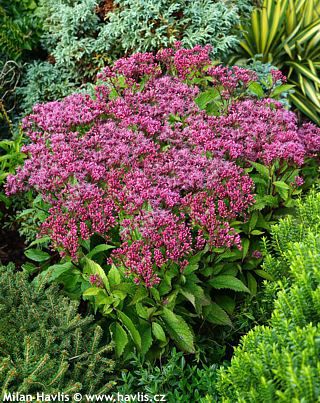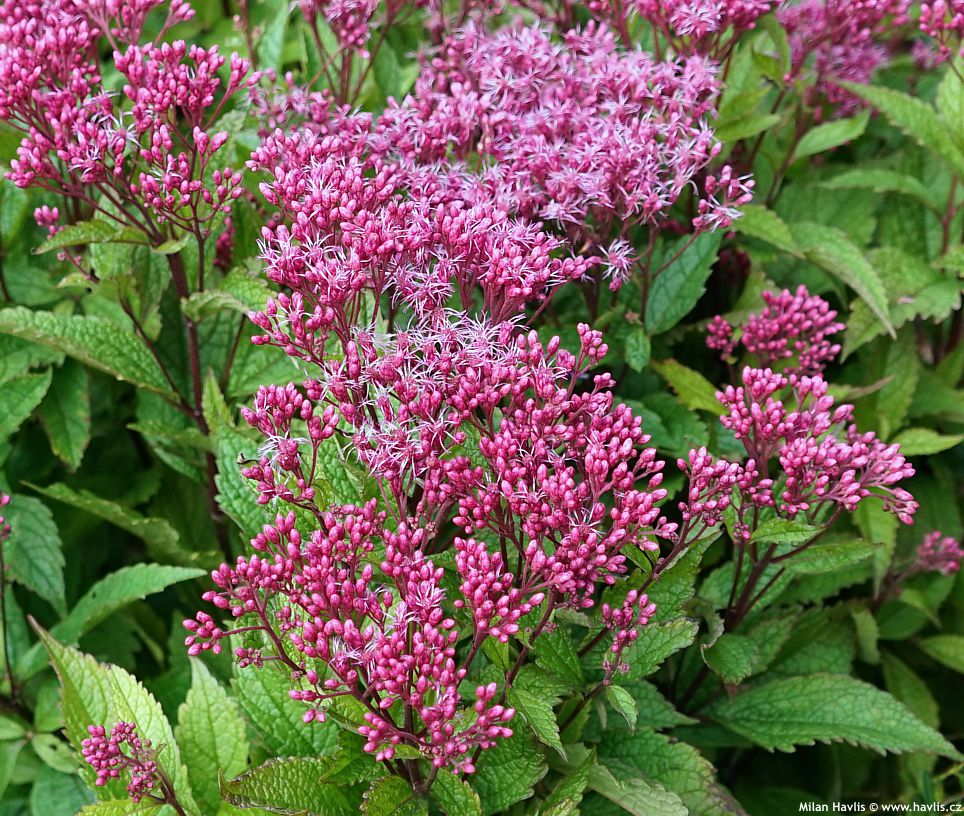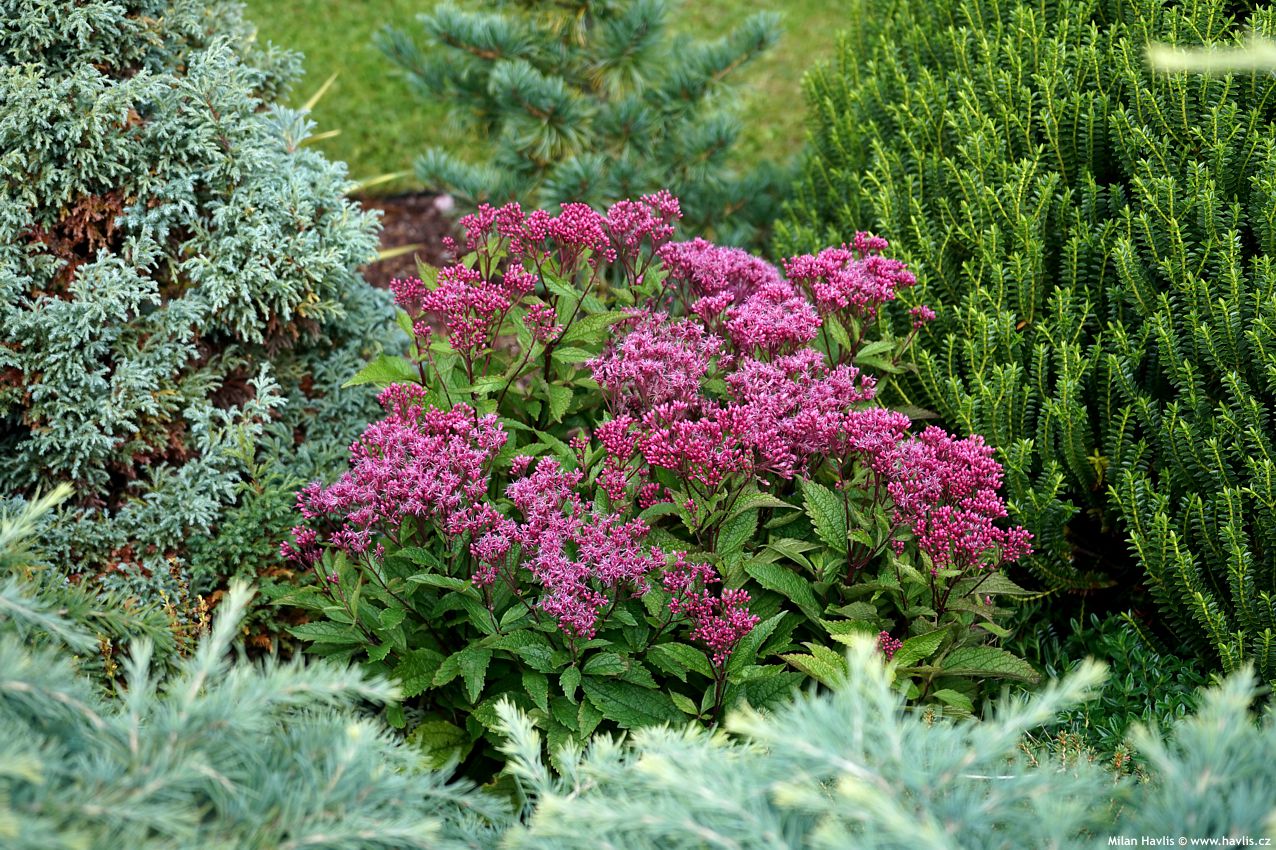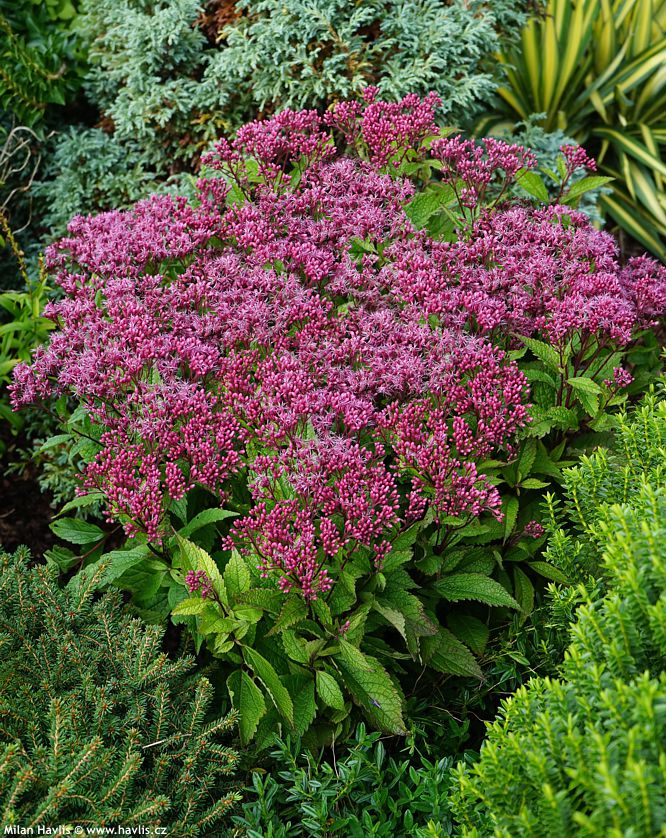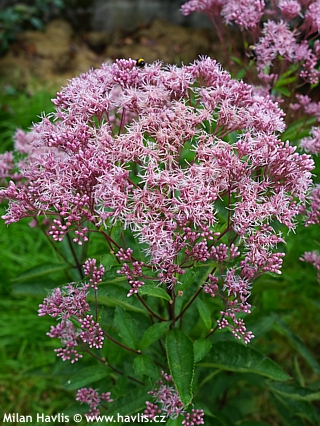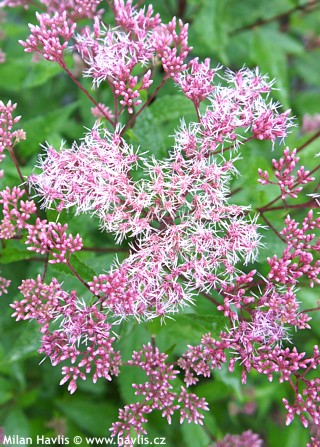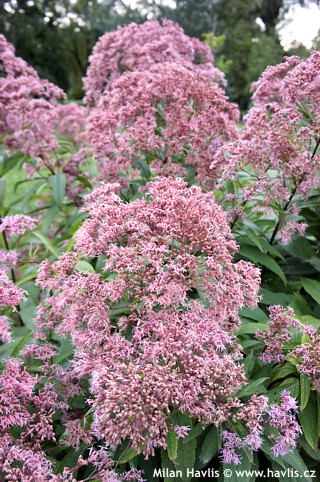Eutrochium purpureum (syn. Eupatorium p.) 'Floreupre1' EUPHORIA™ RUBY Joe Pye weed
size/type
mid-sized perennial,mid-sized perennial
usual height
0,5-0,8m
usual width
0,5-0,8m
leaves
deciduous broadleaf
colour of leaves
flowers
showy
colour of flowers
blooming time
July-September
location
full sun
soil type
neutral to alkaline
soil moisture requirements
tolerates (but does not demand) wet ground
USDA zone (lowest)
5 (down to -29°C)
winter protection
for zone 5+6

for zone 7

categorized
Eutrochium
Joe Pye was an American medicine man travelling from town to town with his medicines. This plant that is known for its curative effect on kidneys and urinary tract was named after him – Joe Pye Weed. It is a tall perennial with deep wine-red stems and attractive flowers in mid or late summer. It comes from North America where it is found in moist or boggy locations.Description of the plant:
EUPHORIA™ RUBY is the shortest growing and a very compact variety of Joe Pye Weed so far. Its sturdy, maroon stems commonly grow between 50 and 80 cm in height. As early as in late July appear up to 26 cm wide corymbs composed of bright purple red flower buds which open into tiny, fringed flowers. Their calyxes are bright purple and petals almost white which enhances the calyx colour and makes the plant a glowing showcase. Flowers attract bees, butterflies, and other winged insect, and provide them with plenty of food late in the season when not many flowers bloom. Deciduous leaves form whorls of 2 or 3, they are broadly lanceolate, serrated at margins, mid to dark green. EUPHORIA™ RUBY was developed by Ute Gebhardt and US plant patent No. PP31668 was granted in 2020.
This perennial was formerly called eupatorium but is now shifted to a new genus eutrochium because of its leaves which are opposite on eupatorium and whorled on eutrochium. It may get a little confusing when it comes to its hybrids that come from eutrochium genus but turn out to have opposite leaves.
Joe Pye Weed likes moist sites and when established it takes some level of occasional waterlogging, it can even grow at the marshy edge of a pond when it seeds itself there. It thrives in fertile, preferably alkaline soil in full sun or very light shade. Its stems are strong enough to take most weather caprices so you needn’t find it a sheltered spot. In spring remove all stems from previous year and beware of slugs that love its newly emerging foliage. It is hardy to at least -30 °C (USDA zone 5), possibly a little more.
Last update 17-10-2022
QUICK PRICE OVERVIEW
CURRENTLY SOLD OUT
WANT TO TRY A SIMILAR PLANT?












